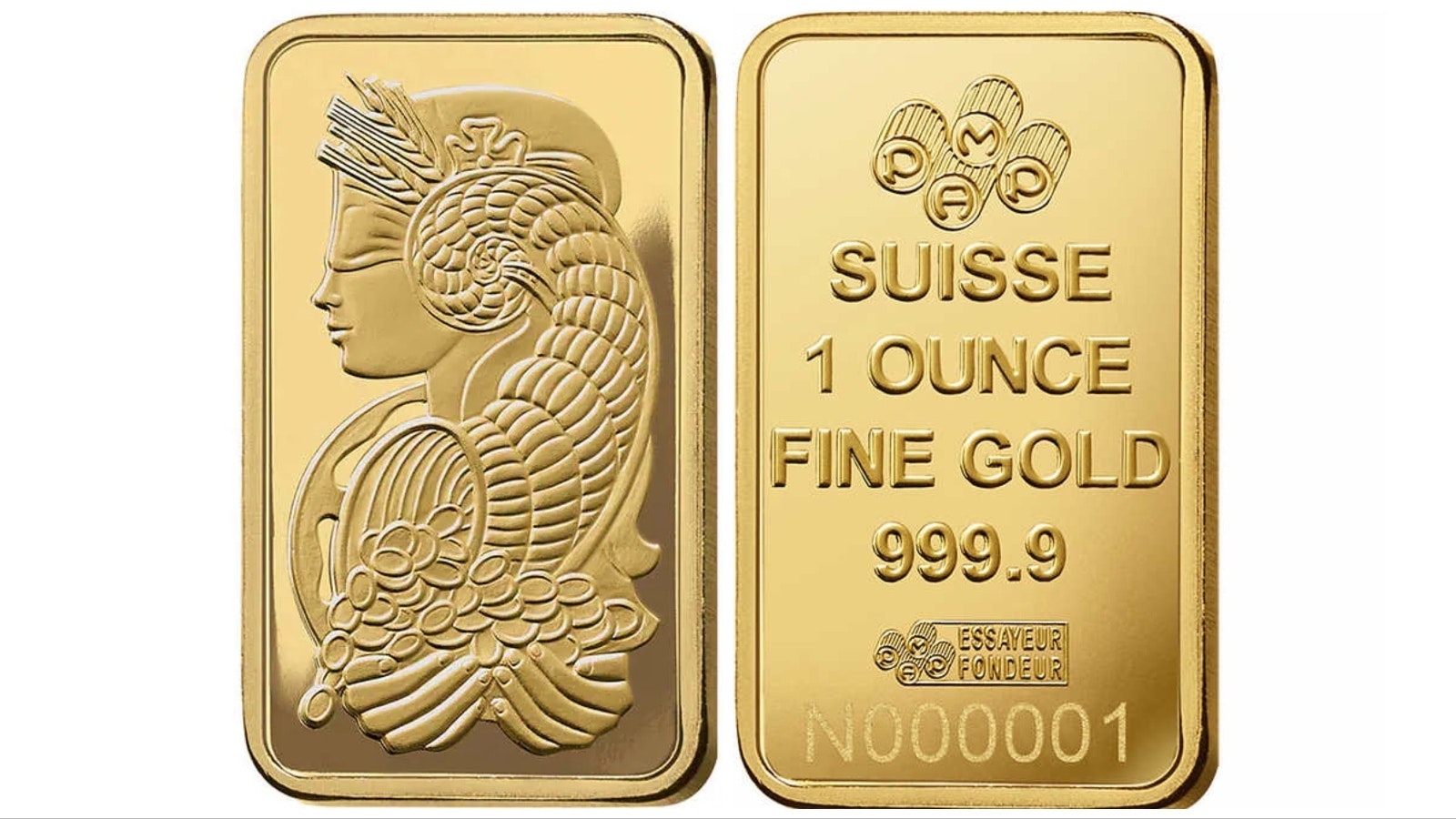The gold rush is on, but it’s not to the Black Hills or to California that people are headed this time.
Instead, it’s Costco.
The warehouse giant has added 1-ounce gold bars to its inventory of items that members can buy, though the bars are only available online.
In a recent earnings call, the company’s CFO Richard Galanti touted the success of this new product. The gold bars sold out within a few hours of appearing on the website — faster than toilet paper in a pandemic.
A big-box retailer like Costco selling gold bars shows how the commodity as a safe haven and investment vehicle is catching on with more and more of the general public.
But “gold bugs” should be cautious. There are lots of things to consider when it comes to sinking thousands of dollars into a physical metal like gold, or for that matter, its close cousin, silver.
Dick Larkin is the owner of Burri’s Jewelry in Cheyenne. He has been buying and selling gold for decades. He remembers when few people thought of gold as a safe haven. At that time, it was a mere $50 to $60 an ounce.
“I think the real turning point came in the late 70s when we went through an oil crisis,” he told Cowboy State Daily. “We went through another one a few years later, and I remember that gold went up over $800 an ounce. That was the first time when we really started seeing people become what we referred to as gold bugs.”
Over the years since that time, Larkin has watched as gold prices have fluctuated, up and down.
“It’s almost always with crisis,” he said. “Whether it’s the Lehman Brothers lending crisis, you know, or Black Monday, when the market took a huge tumble in the 80s. It always seems to have something to do with that.”
But catastrophic events don’t always bump the price of gold up significantly, Larkin added.
“There was a little, little bump that took place on 9-11,” he said. “And then the latest, you know this (Hamas) massacre that took place, or any of the things that are going on in the Ukraine. You would think wow that gold would be at $4,000 an ounce.”

Silver Is Better?
While a lot of attention and focus in the media has been on gold when it comes to buying mattress metal for an apocalypse, Larkin has seen a shift to metals like silver.
“Serious doomsayers, they’re probably going to buy junk silver,” Larkin explained. “It comes in smaller denominations. The thinking there is, OK what if I have to buy a carton of milk or something like that.”
The spot price for an ounce of gold, was around $2,000 bucks on Tuesday afternoon — unwieldy when it comes to buying a loaf of bread or some milk.
In the case of silver, what people are looking for are so-called “junk coins.”
These are dimes, quarters, half dollars, and the like, minted before 1964.
“They would have had a 90% value to them,” Larkin said. “That means 90% pure silver, with a 10% alloy.”
Those particular coins are worth more than their face value.
“A (pre-1964) dime today, I’d be buying for about $1.40,” Larkin said. “So that dime is worth a lot more.”
Gold Financial Lessons
The rise in gold’s popularity is something that financial investment planner Bryan Pedersen has also been watching over the years.
He, too, has seen a lot of gold bugs, but he’s not sold on the idea of gold as magic money in an apocalypse.
“It has had a placeholder value for a long time in human history,” Pedersen said. “And it still has, I don’t want to diminish it. It does have value, and it can be used to diversify a portfolio. But I think lot of times that people selling gold are not selling it as a diversification tool, but rather as a false apocalyptic savior.”
Pedersen counsels his clients to have no more than 5% or so of their portfolio in gold or silver.
“You know when the Russian ruble collapsed, you still needed it to ride the subway,” Pedersen said. “You couldn’t just shave off a gold brick in the turnstile. You needed to put a ruble in there to get on the subway, and that’s a lesson that I give all my clients who want to hold gold. No one’s going to accept it. King Soopers will not accept it. You cannot shave off a chunk of your gold for a pound of bacon.”
Pedersen urged people to think a little bit about why Costco might be selling gold.
“They’re not doing it out of the goodness of their heart,” he said. “They’re making a profit margin, you know. They have identified it as an opportunity for them to make money. Corporate interests and individual interests don’t always align.”
Don’t Go Overboard
Holding too much gold is something Larkin himself cautions against, even as he said he does place some faith in it as a safe haven.
“We in the United States, of course, have always had the good, good fortune of having a sound and secure banking system,” he said. “But there are certainly parts of the world where, you know, they have no banking system whatsoever.”
In those parts of the world, individuals have relied on hard assets, like gold chains, to hold their net worth.
“During World War II many Jews, you know, their businesses weren’t going to be worth anything and their property wasn’t going to be worth anything,” Larkin said. “After Kristallnacht, for example, which took place what 70, 80 years ago, that was when many Jewish families said, ‘We gotta get out of Deutschland, and, you know, we can’t transfer or sell our property because they’ve just impounded it. They took it away from us. What do we have left? We have our diamonds, you know, our gold.’”
Jewelry isn’t however an investment he recommends for holding net worth.
“Jewelry, you know, has a markup to it, you know that goes beyond the price of what the metal is actually selling for,” he said. “So we’ve never been proponents of advocating buying jewelry for investment. If you advocate that, I don’t think you’re doing a client a favor. But if you like jewelry and you enjoy wearing it, it does have some residual value to it, over and above whatever it is that sparkles.”
When It’s A Useful Hedge
Pedersen does agree that gold, as a commodity, can be a useful hedge against inflation and deflation, but to function that way, it needs to be part of the right mix of assets.
“Perhaps you have real estate and stocks and you want something else that will maybe have a lower correlation to those,” he said. “Owning low-correlated investments is good for diversification.
“But, usually,” Pedersen added, “The people who are the most bullish on gold are those selling it.”
There are additional expenses Pedersen believes people buying gold on the street need to consider if they want to get into gold.
While spot prices for gold might be $2,000 or more on any given afternoon, if someone were to sell an ounce of gold, the spot price is not what they’ll get for it.
“In reality there are a lot of expenses that you have to put in,” Pedersen said.
Those expenses include assaying the gold, to assure that it has the value that’s been claimed. That assay is likely to be an expense both on the way into and on the way out of a person’s hands.
On top of that, gold buyers generally do charge a commission. Larkin, for example, charges a 10% commission when he buys gold.
Gold that’s being held by a consumer also needs a secure place, or it might be stolen.
Pedersen recommended insuring any gold that’s physically held, so that if it’s stolen, the value isn’t lost.
Larkin suggested storing it in a safety deposit box at a bank, so that it won’t be stolen.
Both of those options add additional expense to dealing in gold.
It’s Still A Commodity
Another thing to consider is just the nature of gold as a commodity, and all that that implies.
“It can be volatile,” Pedersen said. “Like any investment if you time it right, you can be OK. But timing of investments is only successful 20% of the time.”
Both Pedersen and Larkin suggested that trying to time the market for gold is not likely to be successful.
“I’ve tried to speculate on it,” Larkin said. “And I’ve discovered that realistically, I’m not very good at that. I’m better at being a trader, you know, just saying OK, this is what we’re dealing with right now. And this is what I can offer you for it, if you want to sell it.”
Renée Jean can be reached at renee@cowboystatedaily.com.





